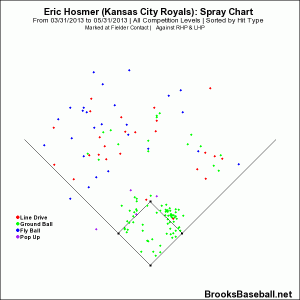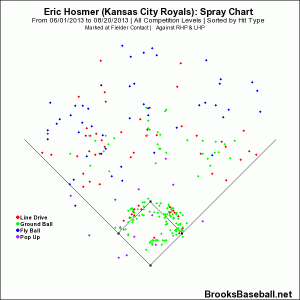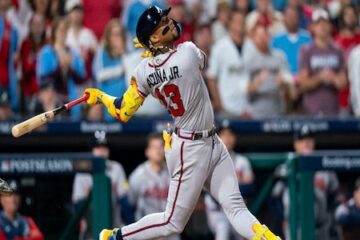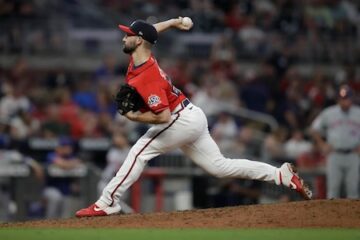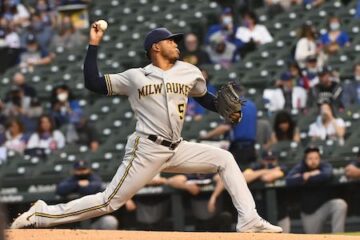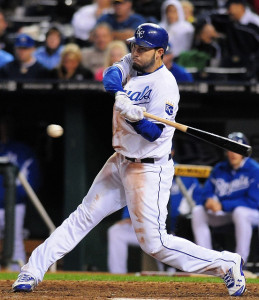Eric Hosmer, Patience, and Expectations
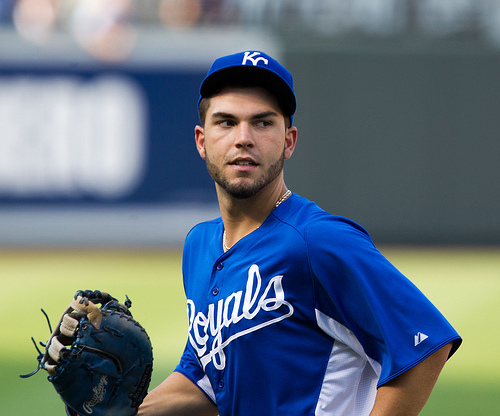
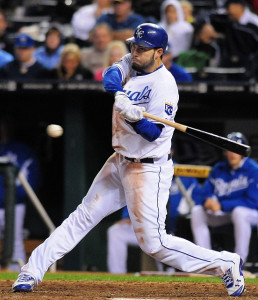
It wasn’t always this way. We once lived in a world where patience was a virtue, and an expected one at that. But we don’t exist in that kind of place today. No. We live in an instant satisfaction, give it to me now sort of world. And that’s okay. Like many of you, I want what I want now. This lack of patience rears its head when it comes to our fantasy sports. This baseball season, I saw players like Jonathan Lucroy and Kyle Seager dropped within the first few weeks. I’ve witnessed sell lows when holding was the best option. And I cringed at draft reaches on youngsters who have yet to play more than 10 games in the majors. We constantly preach sample size in the SABR world, yet many of us don’t have the strength to follow it through.
Fantasy sports play such a large role in our sports lives, it blends into reality, and it all begins to blur. For some, expectations can become out of whack. Quarterbacks were once allowed to be groomed and baseball’s top prospects worked through growing pains. But now, they must perform well starting year one. If they happen to falter, they get the bust label. That’s where Eric Hosmer comes in. He is just another shining example of fantasy owners wanting the now, not being patient, and having unrealistic expectations.
Eric Hosmer’s story is one we have heard before. A top prospect, who may or may not have proved anything as of yet in the bigs, gets over-hyped, over-valued, and proceeds to fall flat on his face. The Kansas City Royals’ first baseman actually managed a successful rookie campaign in 2011. Unsurprisingly, he was over-valued in drafts the following season, as owners expected an immediate leap to greatness for the young slugger. He proceeded to disappoint, hitting a dreaded .232 with a .359 slugging percentage. The start of 2013 didn’t feel very different from 2012 for the lefty. The months of April and May came and went, and he gave us one home run. His slugging percentage was .306 in April and .352 in May. The bust label was officially placed on Hosmer.
But then June came along and production began to change for the better. Hosmer slugged .541 in June, .495 in July, and .500 so far in August. He has hit over .300 in each month and now has a total of 14 dingers and 10 stolen bases. The production has been completely different since the end of May. But has anything really changed?
Eric Hosmer’s biggest issue is the groundball. He hits them. And he hits them a lot. More than half of his balls in play are grounders. 53.8%. League average is about 44%. He has an above average line drive rate, but his flyball rate is a paltry 24.2%. If this pace continues, it would be a third straight year of decline in FB%. Hosmer doesn’t strike out much and although he could walk a bit more, he was above average in that area last season. So this is all about the groundballs and the lack of flyballs. The recent success gives us hope that maybe things are changing. Let’s see if we can find some insight looking at month to month results.
March/April:
|
G |
PA |
H |
HR |
ISO |
OBP |
SLG |
GB% |
HR/FB |
FB% |
GB/FB |
|
22 |
83 |
18 |
0 |
.056 |
.337 |
.306 |
52.7 % |
0.0 % |
21.8 % |
2.42 |
May:
|
G |
PA |
H |
HR |
ISO |
OBP |
SLG |
GB% |
HR/FB |
FB% |
GB/FB |
|
28 |
115 |
29 |
1 |
.083 |
.307 |
.352 |
60.6 % |
5.6 % |
19.1 % |
3.17 |
June:
|
G |
PA |
H |
HR |
ISO |
OBP |
SLG |
GB% |
HR/FB |
FB% |
GB/FB |
|
27 |
118 |
33 |
6 |
.239 |
.347 |
.541 |
55.7 % |
27.3 % |
22.7 % |
2.45 |
July:
|
G |
PA |
H |
HR |
ISO |
OBP |
SLG |
GB% |
HR/FB |
FB% |
GB/FB |
|
25 |
111 |
34 |
4 |
.171 |
.351 |
.495 |
52.8 % |
17.4 % |
25.8 % |
2.04 |
August:
|
G |
PA |
H |
HR |
ISO |
OBP |
SLG |
GB% |
HR/FB |
FB% |
GB/FB |
|
20 |
90 |
27 |
3 |
.171 |
.378 |
.500 |
44.6 % |
12.5 % |
32.4 % |
1.38 |
Last season, Hosmer’s FB% was 27.9. We finally see a number above that mark in August, but that is still below the league average of about 36%. It is very important to see if he can continue to increase his FB% through the end of the season. At 23 years of age, a change in approach or mechanics is possible. Let’s take a look at these four dingers and see if we can find a change in Hosmer’s swing.
May 9th, 2013 Homer off of Freddy Garcia’s breaking ball
August 5th, 2013 Homer off of Ryan Pressly’s fastball
August 16th, 2013 Homer off of Justin Verlander’s breaking ball
August 18th, 2012 Homer off of Jake Peavy’s slider
I can’t honestly find an obvious change, but I am no scout. Perhaps Hosmer’s spray chart can tell us something worthwhile. You can click to enlarge.
Although he is still going to the opposite field with regularity, Hosmer is pulling the ball more often. The second chart seems to be more in line with what he did in 2011 and 2012. Look at some of those flyballs to dead center. Power. His flyball ball distance is 297.56 feet and that places him 25th among qualified batters. That ranks higher than Jay Bruce, Chris Carter, and Prince Fielder. You wonder what type of home run potential there would be for Hosmer if he got the ball in the air more.
Let’s see if there is a type of pitch Hosmer is having success against.
Results and Averages – from 03/31/2013 to 05/31/2013
|
Pitch Category |
Count |
AB |
K |
BB |
HBP |
1B |
2B |
3B |
HR |
BAA |
SLG |
ISO |
BABIP |
| Hard | 470 | 111 | 18 | 10 | 1 | 21 | 5 | 0 | 0 | .234 | .279 | .045 | .280 |
| Breaking | 166 | 39 | 9 | 4 | 0 | 8 | 2 | 1 | 1 | .308 | .487 | .180 | .379 |
| Offspeed | 101 | 29 | 4 | 0 | 0 | 7 | 1 | 0 | 0 | .276 | .310 | .035 | .320 |
Results and Averages – from 06/01/2013 to 08/20/2013
|
Pitch Category |
Count |
AB |
K |
BB |
HBP |
1B |
2B |
3B |
HR |
BAA |
SLG |
ISO |
BABIP |
| Hard | 696 | 178 | 18 | 13 | 0 | 42 | 15 | 0 | 8 | .365 | .584 | .219 | .375 |
| Breaking | 305 | 76 | 15 | 1 | 0 | 13 | 0 | 1 | 2 | .211 | .316 | .105 | .237 |
| Offspeed | 173 | 38 | 5 | 2 | 0 | 7 | 2 | 0 | 3 | .316 | .605 | .290 | .300 |
From April to May, Hosmer’s success was against breaking pitches. However, it isn’t as if he did a ton of damage with those breaking pitches. And since June 1st, his success is coming from fastballs and changeups. If you notice, he is seeing an increase in breaking balls from June 1st through August, and is failing against them. The sample size is small, so I wouldn’t be too concerned with any struggles or successes. I was hoping to find something more drastic, but there is nothing to indicate that Hosmer is sitting on one pitch type in order to gain an advantage at the plate. As you can see, he is currently crushing both fastballs and changeups.
Despite his recent success, it looks as if Hosmer isn’t doing anything all that different from earlier in the season. Compared to his past, he is making a little more contact and has a decreased strikeout rate. His IFFB% is down for the third consecutive year and his line drive rate is up a bit compared to his last two seasons. These are all positives, but he’s still hitting too many groundballs, not enough flyballs, and that is going to cap his home run potential. Teammate Billy Butler suffers from the same issue, but he hit 29 bombs last season. So far, that outburst is proving to be an outlier. Perhaps Hosmer can hit 25 dingers with a little luck.
If you have Hosmer in a keeper/dynasty league, I would look to see what his market value is and not be afraid to move him. If he continues to finish the year strong, there could be a buyer out there that is willing to pay for expectations that are unlikely to be met. Some may believe he is going to be a .300 hitter who delivers 30 homers and 15 steals. Personally, I believe that type of power output can only come if he drastically changes his batted ball distribution, so I recommend setting your expectations a little lower. He can certainly produce a .290 average with 17-20 home runs and 10-15 steals in a full season. The combination of steals and homers with a helpful batting average can work as a starter for your first baseman slot. There is no reason to ignore a solid and useful fantasy player just because he didn’t reach what many thought was his potential. Understand what the player will most likely provide and buy accordingly. Eric Hosmer was over-hyped and over-valued, and then prematurely labeled a bust. Today, that is the world in which we live. But the key is to take advantage of it.
Thanks to Fangraphs.com, Brooksbaseball.net, and Baseballheatmaps.com for the data.
Thanks to MLB.com for the videos.


